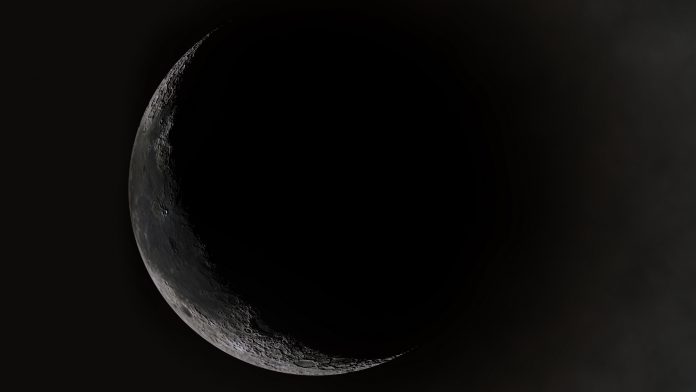Using the Chang’e-4 rover, scientists have discovered an unusual dark green gel-like substance in a crater on the far side of the Moon.
A research team led by Professor Kaichang from the Aerospace Information Research Institute (AIR) of the Chinese Academy of Sciences and their collaborators analysed the substance in detail. The researchers found that the unusual substance is actually an impact melt breccia, a rock composed of broken fragments of minerals or rock cemented together.
China’s Chang’e-4 probe, including a lander and a rover, successfully touched down within the 185-km-wide Von Kármán crater inside the South Pole-Aitken (SPA) basin on January 3, 2019, making the first-ever soft landing on the lunar far side.
The gel-like substance was discovered in a crater during the eighth lunar day of the rover’s mission. Detailed measurements on the breccia and surrounding regolith, superficial deposits covering solid rock, were conducted during the ninth lunar day.
How did the impact melt breccia form?
The discovered breccia, measuring 52 by 16 centimetres, resembles the lunar impact melt breccia samples 15466 and 70019 (Fig. 2) returned by the Apollo missions. It was formed by impact-generated welding, cementing and, agglutinating of lunar regolith and breccia.
Clods surrounding the breccia-hosting crater were crushed into regolith powders by the rover’s wheels, indicating the regolith may be compacted slightly and becomes blocky and friable. Hapke model-based spectral unmixing results showed that plagioclase was abundant, and pyroxene and olivine had almost equal fractions, indicating the regolith was likely the weathering products of noritic rocks.
According to Kaichang’s paper, published in Earth and Planetary Science Letters: ‘Finsen and Alder craters are on the margin of the proposed impact melt pool produced by the SPA basin-forming event. Therefore, the ultimate source of the regolith might originate from a differentiated melt pool or from a suite of igneous rocks.’







